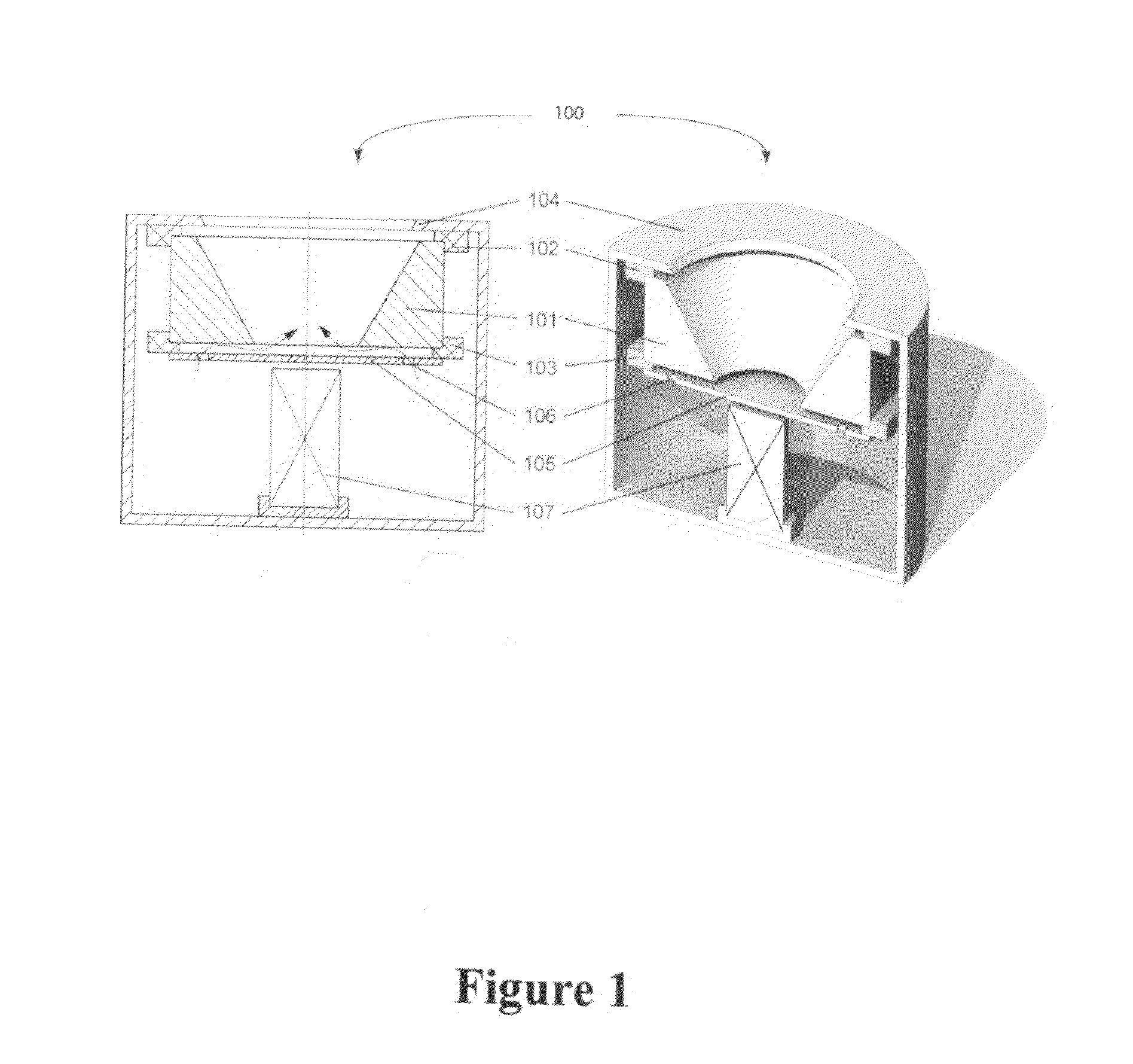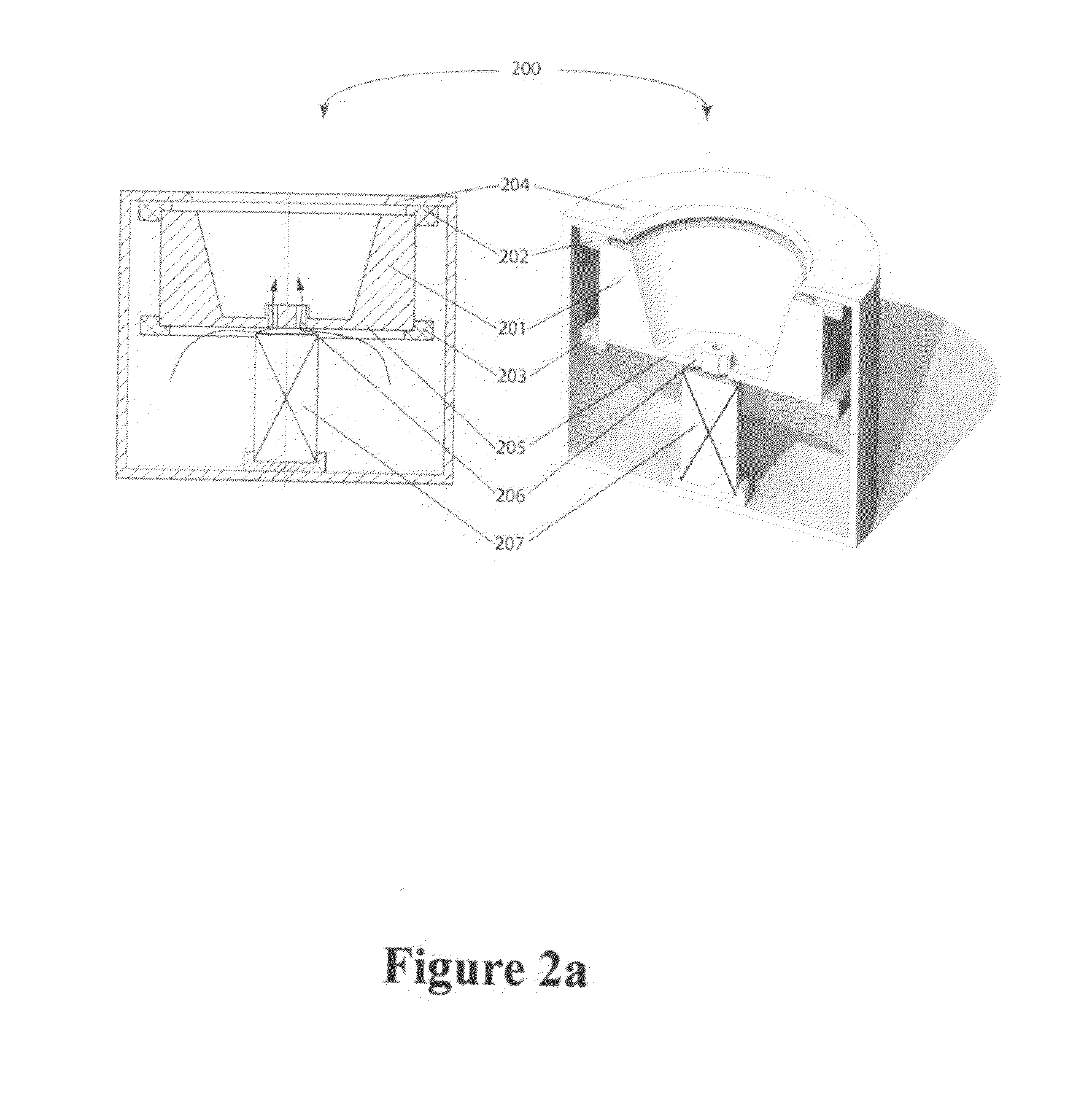Hall-current ion source with improved ion beam energy distribution
a broad-beam ion source and hall-current technology, applied in the direction of light sources, electric discharge tubes, electrical apparatus, etc., can solve the problems of not being very practical, not working well at high discharge currents, and substantial erosion, so as to eliminate ion beam contamination and effectively neutralize and ion beam
- Summary
- Abstract
- Description
- Claims
- Application Information
AI Technical Summary
Benefits of technology
Problems solved by technology
Method used
Image
Examples
Embodiment Construction
[0054]In this part of a patent there is described and shown in FIG. 6a a schematic and three-dimensional drawing of an end-Hall ion source with a multi-chamber anode with its simplest approach in a form of a two-chamber with introduction of a working gas from an anode first chamber into a second chamber and from a second chamber through a series of holes in a lower part of anode into a discharge channel that mainly consists of a hollow cone-type electrode occupying most part of a discharge channel. An end-Hall ion source of a multi-chamber design, as it will be seen from measurements of ion beam energy distributions and ion beam currents, shows a substantial improvements in comparison with above described in a Prior Art various end-Hall designs, demonstrating a quite narrow ion beam energy distribution with similar to a gridded ion source, except that, in this case, the ion beam energies are in the range of low energies from about 20 eV and up to about 200 eV with ion beam currents ...
PUM
 Login to View More
Login to View More Abstract
Description
Claims
Application Information
 Login to View More
Login to View More - R&D
- Intellectual Property
- Life Sciences
- Materials
- Tech Scout
- Unparalleled Data Quality
- Higher Quality Content
- 60% Fewer Hallucinations
Browse by: Latest US Patents, China's latest patents, Technical Efficacy Thesaurus, Application Domain, Technology Topic, Popular Technical Reports.
© 2025 PatSnap. All rights reserved.Legal|Privacy policy|Modern Slavery Act Transparency Statement|Sitemap|About US| Contact US: help@patsnap.com



